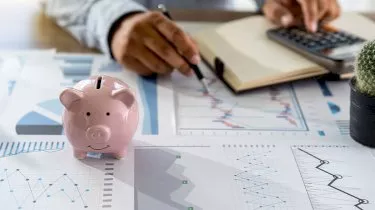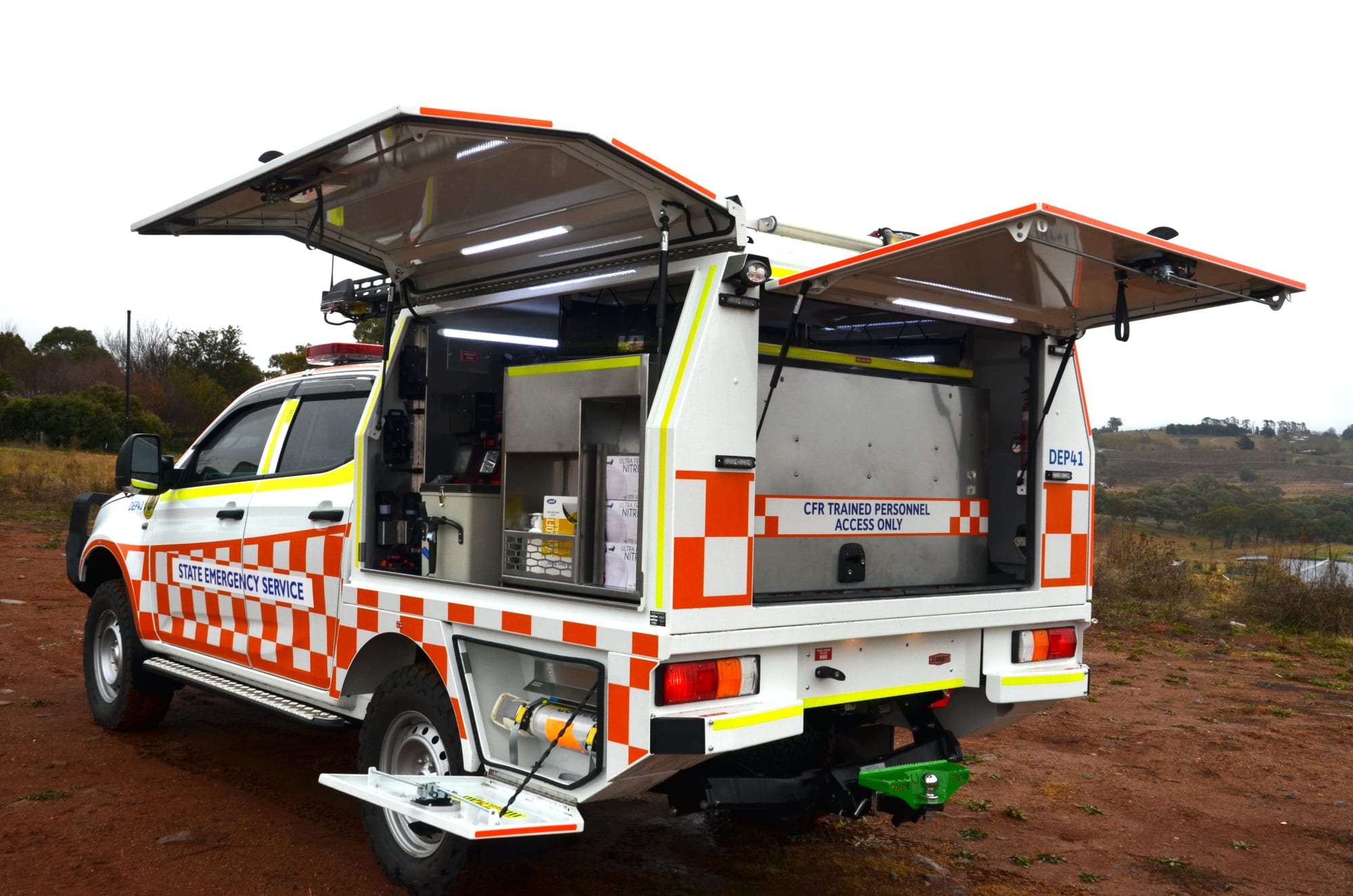Invest
Low interest rates and QE won’t save the economy
As the RBA is widely tipped to lower the official cash rate to 0.5 per cent next month, its effectiveness has been questioned by a fund manager.
Low interest rates and QE won’t save the economy
As the RBA is widely tipped to lower the official cash rate to 0.5 per cent next month, its effectiveness has been questioned by a fund manager.

In November last year, Reserve Bank governor Dr Philip Lowe announced that the lower bound for the Australian cash rate was 0.25 per cent before a version of quantitative easing (QE) would be used.
Graham Cooke, insights manager at Finder, said QE will be on the cards if the rate cuts continue to be ineffective beyond the housing market.
“The RBA said they may look to alternative stimulus methods once the rate hits 0.25 per cent.
“We’re only two cuts away from that, and the three cuts of 2019 have failed to stimulate anything beyond the housing market,” Mr Cooke said.

According to Chris Bedingfield, principal at Quay Global Investors, introducing quantitative easing (QE) – which the central bank has alluded to following two rate reductions – is “doomed to fail”.
Leaning on lessons learnt from other countries, Mr Bedingfield said, “We know Japan has used QE since 2001 for little or no inflationary or stimulatory effect. Further, there appears to be little evidence it worked in the US, Europe or the UK.”
The idea that low interest rates and QE support asset prices sounds intuitively correct (i.e. “money printing”) but is not widely supported by observation or the operational realities of monetary policy.
“While many market commentators are predicting further interest rate cuts in 2020, we have serious doubts about the efficacy of this strategy.
“We only need to look at Japan, which moved to a zero interest rate policy in 1995, to see that it just doesn’t work – over the past 30 years, the Nikkei 225 Index has fallen 41 per cent,” Mr Bedingfield said.
Mr Bedingfield said QE has largely failed to deliver because functionally it operates as a private sector tax aimed at the banking system, the wealthy and anyone that holds a superannuation account.
“QE encourages the sale of low-risk low-yielding assets for even lower-yielding cash, resulting in lower net interest income to the private sector. Where does this income go? To the central bank on the other side of the trade, acquiring higher-yielding bonds for the lower-cost cash.
“In effect, the central bank is making an investment spread at the expense of the natural holders of bonds (including banks and superannuation accounts)
“In Australia, excess capital (profits) are remitted to the Treasury – in the same way that cash receipts from the Tax Office are remitted to the Treasury.”
“Investors seeking Aussie QE should be careful what they wish for – essentially, they are asking for the wider economy to be taxed.
Mr Bedingfield noted five myths about quantitative easing:
Myth 1 – QE is “money printing”, characterised as injecting cash into the economy.
The truth is that QE is nothing more than an asset swap between the central bank and the private sector. The swap is one form of monetary instrument (bonds) for another (cash).
Myth 2 – QE will inject new spending power into the economy.
Owners of bonds are natural savers – there is scant evidence to show swapping bonds for cash increases spending outcomes in the real economy.
Myth 3 – QE will force down long-term interest rates.
US history – and 10-year bond yields – actually shows that when QE commenced, long-term interest rates rose. And when QE ended, long-term interest rates fell.
Myth 4 – QE provides cash for banks to lend.
Banks do not need deposits or reserves to lend. They simply need enough regulatory capital (from shareholders) and a sufficient supply of credit-worthy borrowers to create a loan: and the loan creates the deposit. Therefore the mechanics of QE, which adds deposits and reserves in exchange for bonds, do not impact banks’ ability or willingness to extend loans.
Myth 5 – QE drives long-term share market performance.
The easy response to this myth is Japan. There, QE has been implemented for 20 years, and the equity market remains around 40 per cent below its 1989 peak. Supporters of QE (i.e. Bank of Japan) argue QE has not worked “yet” – but how much more time is needed?
About the author

About the author


Economy
Australia’s softening labour market puts another RBA cut in play — here’s what business should do now
A four-year high in unemployment has revived expectations the Reserve Bank could deliver another rate cut as soon as November. With quarterly GDP growth running at 0.6 per cent and annual growth at ...Read more

Economy
Rising CPI reinforces RBA’s stance as rate cut expectations remain: State Street
State Street Global Advisors says the Reserve Bank of Australia (RBA) is likely to hold its current policy outlook following the release of September quarter inflation data, which showed an unexpected ...Read more

Economy
NSW SES boosts tsunami preparedness ahead of World Tsunami Awareness Day
As World Tsunami Awareness Day approaches on 5 November, the New South Wales State Emergency Service (NSW SES) is ramping up efforts to enhance tsunami preparedness along the east coastRead more

Economy
Lifesaving Regional Response Strengthened with New NSW SES Vehicles
In a significant boost to regional emergency services, the NSW State Emergency Service (SES) has unveiled 11 new Community First Response (CFR) vehicles, designed to enhance the speed and safety of ...Read more

Economy
Australia's June quarter GDP growth driven by consumer and government spending
Australia's economy has shown unexpected resilience in the June 2025 quarter, with household and government consumption driving growth despite a significant decline in public investmentRead more

Economy
Australia's GDP surprise is real but operators should heed the growth mix warning light
Australia’s June-quarter growth beat expectations on the strength of household consumption and government spending, even as public investment sagged. The upside surprise signals resilience, but the ...Read more

Economy
Households carried the quarter: what Australia’s upside GDP surprise means for strategy now
Australia’s economy expanded faster than expected in the June 2025 quarter, with GDP up 0.6 per cent quarter-on-quarter and 1.8 per cent year-on-year — the strongest pace in two years. The kicker ...Read more

Economy
Inflation dynamics in Australia: Electricity subsidies and labour market in focus
In a recent economic analysis, experts from State Street have highlighted significant developments in Australia's inflation landscape, attributing the changes primarily to the withdrawal of ...Read more

Economy
Australia’s softening labour market puts another RBA cut in play — here’s what business should do now
A four-year high in unemployment has revived expectations the Reserve Bank could deliver another rate cut as soon as November. With quarterly GDP growth running at 0.6 per cent and annual growth at ...Read more

Economy
Rising CPI reinforces RBA’s stance as rate cut expectations remain: State Street
State Street Global Advisors says the Reserve Bank of Australia (RBA) is likely to hold its current policy outlook following the release of September quarter inflation data, which showed an unexpected ...Read more

Economy
NSW SES boosts tsunami preparedness ahead of World Tsunami Awareness Day
As World Tsunami Awareness Day approaches on 5 November, the New South Wales State Emergency Service (NSW SES) is ramping up efforts to enhance tsunami preparedness along the east coastRead more

Economy
Lifesaving Regional Response Strengthened with New NSW SES Vehicles
In a significant boost to regional emergency services, the NSW State Emergency Service (SES) has unveiled 11 new Community First Response (CFR) vehicles, designed to enhance the speed and safety of ...Read more

Economy
Australia's June quarter GDP growth driven by consumer and government spending
Australia's economy has shown unexpected resilience in the June 2025 quarter, with household and government consumption driving growth despite a significant decline in public investmentRead more

Economy
Australia's GDP surprise is real but operators should heed the growth mix warning light
Australia’s June-quarter growth beat expectations on the strength of household consumption and government spending, even as public investment sagged. The upside surprise signals resilience, but the ...Read more

Economy
Households carried the quarter: what Australia’s upside GDP surprise means for strategy now
Australia’s economy expanded faster than expected in the June 2025 quarter, with GDP up 0.6 per cent quarter-on-quarter and 1.8 per cent year-on-year — the strongest pace in two years. The kicker ...Read more

Economy
Inflation dynamics in Australia: Electricity subsidies and labour market in focus
In a recent economic analysis, experts from State Street have highlighted significant developments in Australia's inflation landscape, attributing the changes primarily to the withdrawal of ...Read more








